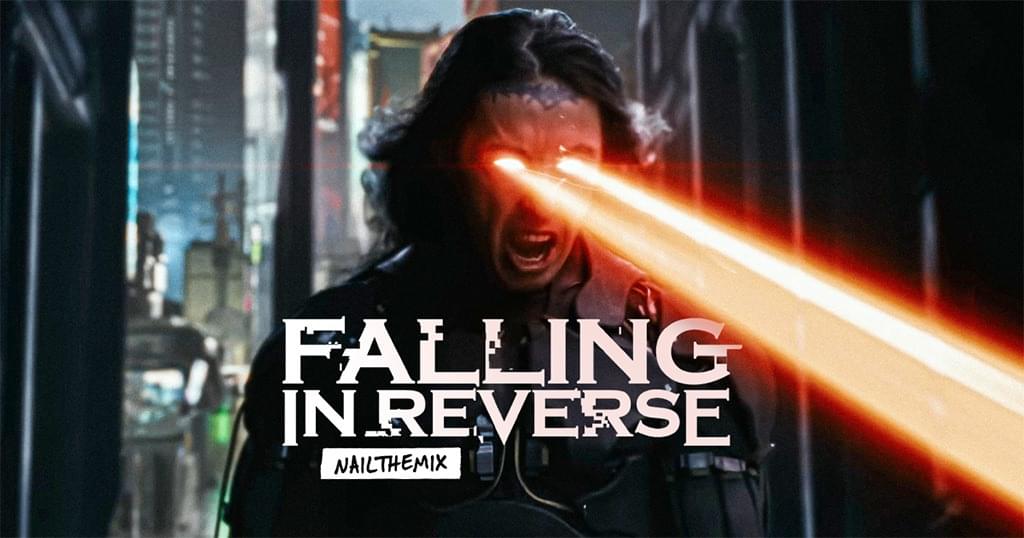
Mixing Modern Metal Hits: Tyler Smyth’s Tricks for Falling In Reverse
Nail The Mix Staff
Let’s be real: modern metalcore hits, like the ones from Falling In Reverse, are a masterclass in production. They’re punchy, dynamic, and packed with layers of synths and effects that all manage to occupy their own space. It’s the kind of polished, aggressive sound that makes you wonder, “How did they do that?”
We got a look under the hood with producer/mixer Tyler Smyth as he broke down his mix of “Voices In My Head.” Forget vague concepts; Tyler shared three specific, creative tricks that add power, width, and impact. These are the kinds of hands-on techniques that go beyond presets and can instantly level up your productions.
Let’s dive into how he does it.
Trick 1: Precision Pumping with MIDI Sidechain
We’ve all used sidechain compression to make synths and pads duck out of the way of a kick drum. It’s a classic move. But sometimes, a standard compressor can feel a little mushy or inexact. For the tight, machine-like groove of a Falling In Reverse track, you need ultimate control.
Enter MIDI-Triggered Shaping
Instead of a standard compressor, Tyler reaches for Cableguys ShaperBox to get a perfectly sculpted sidechain pump. It gives him total command over the shape and timing of the volume ducking.
Here’s the breakdown of his method:
- Set Up the Trigger: Tyler creates a new MIDI track dedicated solely to triggering the sidechain.
- Generate MIDI from the Kick: He uses his DAW’s hitpoint detection to create MIDI notes that perfectly align with the kick drum transients. You could also just copy the kick’s MIDI pattern if you’re working with a programmed beat.
- Apply ShaperBox: On the track you want to duck (in this case, a synth pad), he loads the Volume shaper inside ShaperBox.
- Draw the Curve: This is the crucial part. He sets the grid to a quarter note and draws a very sharp, fast curve. The sustain of the curve is set at 100% so that the synth’s volume isn’t reduced when the sidechain isn’t being triggered. The shape is aggressive—a super-fast attack and quick release—to create a tight, defined “hiccup” rather than a slow, lazy pump.
- Engage MIDI Trigger: He sets ShaperBox to be triggered by the MIDI notes from the dedicated trigger track.
The result is a sidechain effect that’s perfectly in sync and has a custom-tailored shape. Tyler describes the fast feel as imitating the natural compression of a massive speaker system being pushed hard—it adds energy and punch that a slower, “sludgy” curve just wouldn’t deliver for this kind of track.
Trick 2: Crafting Menacingly Wide Atmospheres
Atmospheric pads and drones are essential for creating mood, but they can easily turn into a muddy mess that fights with vocals and guitars. Tyler’s solution is to make them so wide they exist on the absolute edges of the mix, leaving the center wide open.
The “Wide Comp” Technique
This trick is brilliant in its simplicity and creates a massive sense of space.
- Duplicate the Track: He takes the main atmospheric drone track and simply duplicates it, creating a parallel copy.
- Go Super-Wide: On the duplicated track, he adds a stereo widening plugin. He’s a fan of the widener and detune features in Polyverse Music Manipulator.
- Push It to the Max: He doesn’t just add a little width; he pushes the stereo image as far as it can possibly go. The goal is to create an artificially wide signal that feels completely detached from the center.
- Blend to Taste: Finally, he blends this super-wide, effected track back in with the original, drier track.
By mixing the hyper-wide version back in, the atmosphere feels like it’s wrapping around your head. Because it’s so pushed to the sides, he can actually turn it up louder in the mix when the vocals come in, adding to the menacing, lurching energy of the song without ever cluttering the lead elements.
Trick 3: The “Invisible” Master Fader Push
How do you make a chorus or a drop hit with more force without just crushing it with more compression or limiting? Sometimes the answer isn’t another plugin, but a simple, subtle volume move on the master bus. Tyler uses this “invisible” trick to enhance the dynamic impact of a new section.
Automating the Energy
This is one of those “less is more” moves that can make a huge difference in how a song feels. It’s all about creating a perceived energy shift.
Here’s the process:
- Automate the Master Fader: Create a volume automation lane on your main stereo output.
- Create a Dip: In the section right before the big impact (like the last bar of the pre-chorus), he automates the overall volume down by a tiny amount—think just half a decibel (-0.5 dB).
- The Push: Exactly on the downbeat of the drop or chorus, he brings the volume back up to zero, or even pushes it slightly higher (+0.5 dB).
This move is so subtle that a listener will never consciously hear it as a “volume change.” Instead, they feel it as a surge of energy. Tyler experimented with timing it to a snare versus the downbeat and found the downbeat gave the right commanding feel. It’s a pro move that avoids unnecessary processing and lets the mix breathe, proving that you don’t always need complex EQ or dynamics chains to create powerful transitions.
Put These Tricks to Work
From MIDI-controlled dynamics to creative stereo widening and subtle automation, these techniques are all about adding that professional polish and power you hear on major-label metal records.
Falling in Reverse on Nail The Mix
Tyler Smyth mixes "Watch the World Burn"
Get the Session
These are the exact kinds of details you can only get from the pros themselves. Imagine watching Tyler Smyth build the entire Falling In Reverse mix from a raw multi-track, explaining every plugin choice and automation move along the way. With Nail The Mix, that’s exactly what you get.
Each month, we give you the raw multi-tracks from a massive song and a live, in-depth session where you can watch the original producer mix it from scratch. If you’re ready to see how a hit like “Voices In My Head” is really made, check out the full Falling In Reverse session with Tyler Smyth. It’s time to stop guessing and start learning from the best in the business.






